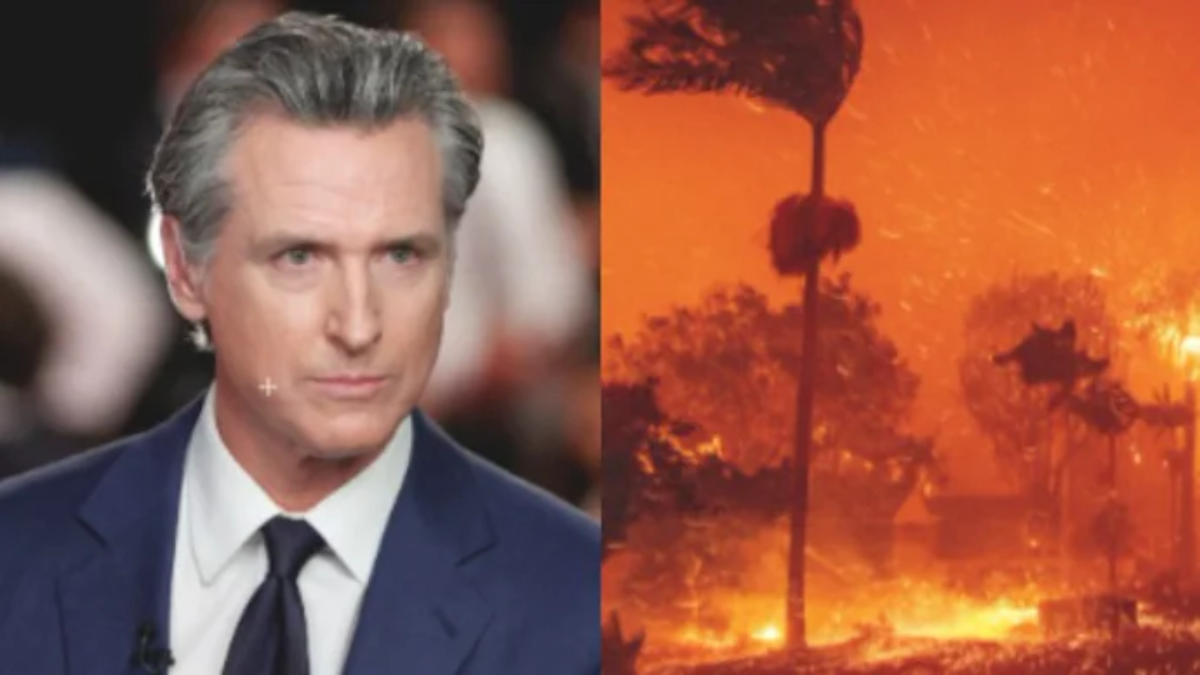California Governor Gavin Newsom has formally requested $40 billion in federal fire aid as the state faces an increasingly dire wildfire crisis. With climate change fueling longer and more intense fire seasons, California’s need for substantial funding has never been more urgent. The request is aimed at enhancing wildfire prevention, strengthening firefighting resources, and assisting communities devastated by recent fires. This funding package would play a critical role in mitigating the long-term impact of wildfires on residents, infrastructure, and the state’s economy.
The Growing Wildfire Crisis in California
Wildfires have become a persistent and devastating threat in California, destroying thousands of homes, displacing residents, and endangering lives. Over the past decade, the state has experienced some of the largest and most destructive wildfires in its history, with each year bringing more extreme fire conditions. Prolonged droughts, rising temperatures, and high winds have combined to create an environment where fires ignite and spread more easily.
The increasing frequency and intensity of wildfires have placed immense pressure on state and local resources. Firefighters are working under extreme conditions, and the financial burden of firefighting efforts and recovery costs has grown significantly. In 2023 alone, California experienced record-breaking fires that scorched millions of acres of land, causing billions of dollars in damages. The need for federal support is clear as state resources become increasingly strained.
Breakdown of the $40 Billion Request
Governor Newsom’s funding request is designed to address both immediate needs and long-term wildfire mitigation efforts. The allocation of funds is expected to focus on four key areas:
1. Firefighting Resources and Equipment
A significant portion of the aid will be used to bolster firefighting efforts. California has already invested in expanding its fleet of fire engines, helicopters, and other firefighting equipment, but more resources are needed to combat the escalating threat. The funding will also help hire and train additional personnel to support fire suppression and emergency response efforts.
Modernizing fire response technology is also a priority. Advanced predictive modeling tools and improved communication systems can enhance coordination among firefighting teams and provide real-time data to help contain fires more effectively. Expanding aerial firefighting capabilities, such as water-dropping planes and drones, is another critical component of the funding proposal.
2. Forest Management and Fire Prevention
Proactive fire prevention measures, such as controlled burns, vegetation management, and forest thinning, are essential to reducing the spread of wildfires. California has already implemented several programs to manage its forests more effectively, but these efforts require substantial funding to be expanded statewide.
The requested funds will support initiatives aimed at reducing fuel loads in high-risk areas, creating firebreaks to protect communities, and improving land management strategies. Investing in these preventative measures can significantly reduce the frequency and severity of wildfires, ultimately saving lives and billions in disaster response costs.
3. Disaster Relief and Community Support
Wildfires have left thousands of California residents homeless and struggling to rebuild their lives. The aid package includes provisions for temporary housing, financial assistance, and infrastructure repairs. Many communities that have been devastated by wildfires face long and difficult recovery processes, and the additional funding would provide much-needed relief to affected families.
Beyond immediate relief, funding would also be used to rebuild public services and infrastructure damaged by fires, such as roads, schools, and utility lines. Ensuring communities have the resources needed to recover and rebuild stronger will be a key focus of the aid package.
4. Climate Change Adaptation and Resilience
As climate change continues to drive extreme weather patterns, California is investing in long-term adaptation strategies. The proposed funding will support research, innovation, and policy initiatives aimed at making the state more resilient to future wildfires. This includes studying the impact of climate change on fire behavior, developing new firefighting technologies, and implementing stricter building codes for fire-prone areas.
Investing in climate adaptation measures now will not only help reduce wildfire risks but also protect California’s economy from the long-term costs associated with natural disasters. Resilience-focused projects will ensure that communities, businesses, and public infrastructure can better withstand the challenges posed by an evolving climate.
Federal and Political Response
Governor Newsom’s request has sparked discussions at the federal level, with lawmakers evaluating the feasibility of the proposed aid package. While many support the need for increased wildfire funding, debates over budget allocations and fiscal responsibility could impact the approval process. Some legislators argue that wildfire prevention should be prioritized over emergency response spending, while others emphasize the need for immediate financial relief.
President Joe Biden has previously expressed commitment to assisting states facing climate-related disasters. His administration has already allocated billions in disaster relief funding across the country, but whether the full $40 billion request will be granted remains uncertain. Federal officials will need to balance California’s urgent needs with the broader demands of disaster funding nationwide.
The Cost of Inaction
Failing to secure adequate funding for wildfire prevention and response could have devastating consequences. Without sufficient resources, firefighters may struggle to contain blazes, leading to greater loss of life, property damage, and environmental destruction. The economic impact of wildfires is staggering, with billions spent on damages, evacuations, and emergency services each year.
Environmental experts warn that without aggressive intervention, California’s wildfire seasons will continue to worsen. Investing in prevention and preparedness now could save billions in future recovery costs while protecting lives and communities. Many advocates argue that the federal government must take a proactive approach, rather than waiting for disasters to escalate before providing aid.
Conclusion
Governor Newsom’s request for $40 billion in fire aid underscores the urgency of addressing California’s worsening wildfire crisis. The funds would provide critical support for firefighting efforts, disaster relief, and climate adaptation strategies. As state and federal officials deliberate on the aid package, the need for swift action remains paramount.
For more information on wildfire prevention and response efforts, visit FEMA’s Disaster Assistance.
Disclaimer – Our team has carefully fact-checked this article to make sure it’s accurate and free from any misinformation. We’re dedicated to keeping our content honest and reliable for our readers.








